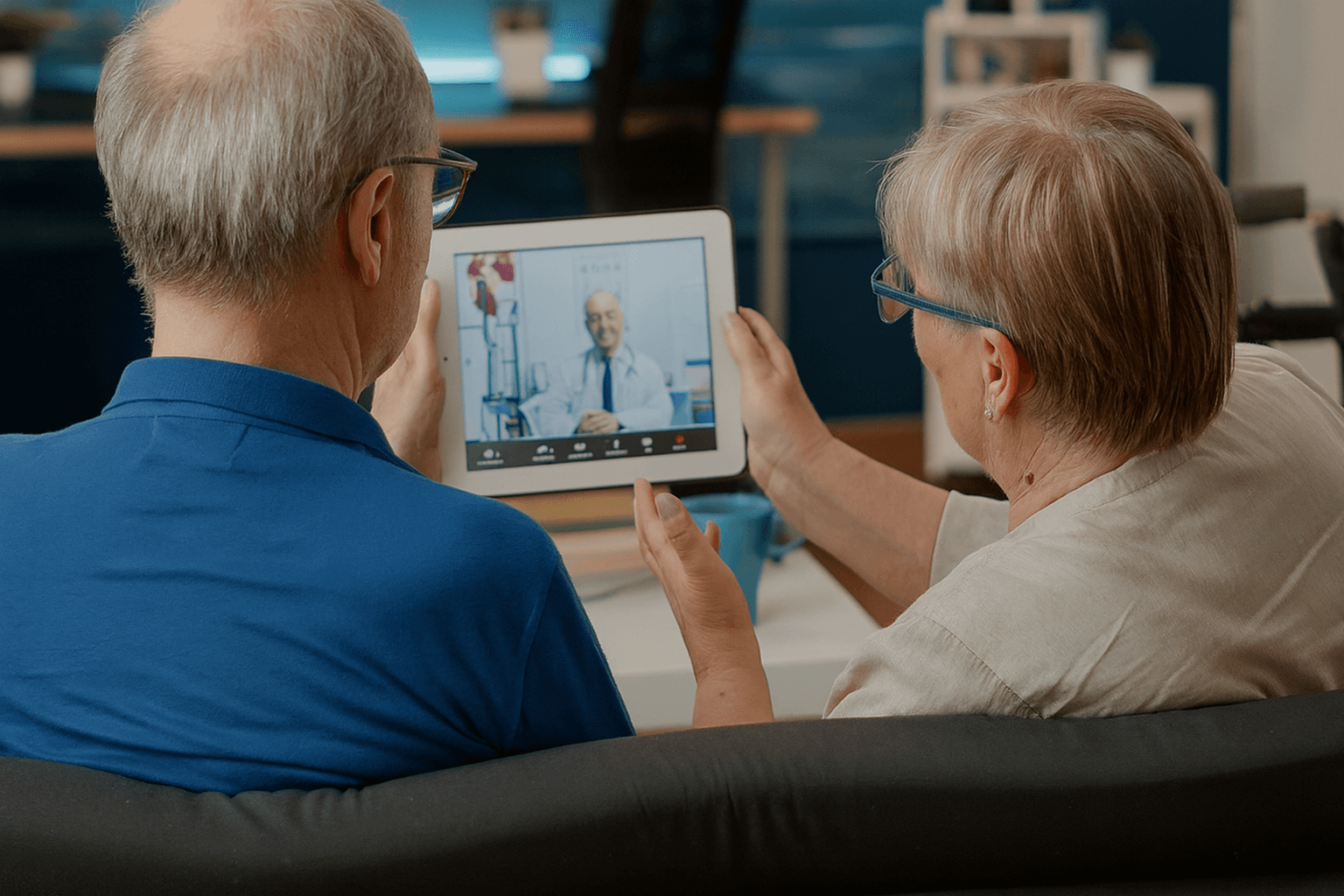Shaping Healthcare Utilization for Adults
Healthcare systems face pressure from rising demand and limited capacity. Adults often turn to emergency departments or urgent care even for low-acuity problems. Remote triage is designed to redirect that demand toward the most appropriate level of care. With structured pathways, adults describe their symptoms, receive guided advice, and are directed to either self-care, primary care, or urgent services when necessary.

This approach changes patterns of healthcare utilization. Studies show fewer unnecessary visits to emergency departments when remote triage is in place. Adults who need primary care are scheduled faster and with better efficiency. For some, reassurance and advice prevent the need for any physical visit at all. The term healthcare utilization has become central in analyzing these changes. The effect is visible not just in hospitals but also in outpatient and community-based care where remote triage offers quicker access.
Resolution of cases is another part of the utilization story. Remote encounters resolve many low-acuity situations on the first contact. Adults with clear and minor conditions often need no further escalation. Complex cases, however, highlight the limits of remote-only models. For those patients, triage acts as a gateway rather than a final solution. Success depends on how effectively triage systems link adults to the next level of care.
Patient Safety and Clinical Outcomes in Remote Triage
Safety is one of the strongest concerns when replacing or supplementing face-to-face triage with remote systems. For adults, the risks include under-triage, missed diagnoses, or delays in escalation. Evidence shows that with standardized protocols and careful oversight, safety levels are comparable to in-person encounters.
Decision-support tools are the backbone of safety. These structured guides help staff avoid missing red flags. If a patient describes chest pain or neurological symptoms, algorithms ensure immediate escalation to emergency care. Adults with minor symptoms are guided toward lower levels of care.
Staff training plays a significant role in safety outcomes. Communication clarity ensures patients not only hear instructions but understand them fully. The use of teach-back methods, where patients repeat instructions, confirms comprehension. This step reduces the chance of misunderstanding.
Clinical outcomes, including morbidity and adverse event rates, are similar between remote triage and in-person models when protocols are followed. That supports remote triage as a safe model of care delivery for adults. It also shows how the role of medical call centers has expanded in managing health at scale.
Adult Satisfaction Levels with Remote Triage

Patient satisfaction is an important marker of quality. Adults value convenience, reduced travel, and the comfort of receiving advice at home. Remote triage provides these advantages. Positive satisfaction scores often link to quick response times, respectful communication, and clear instructions.
Adults who feel their concerns are heard and addressed show high satisfaction. This is where the human element matters most. Compassion, empathy, and cultural awareness ensure adults feel respected. Technology alone cannot deliver this experience. It requires skilled staff supported by strong protocols.
When wait times are long or instructions are confusing, satisfaction levels decline. Adults may also feel less trust in systems if they encounter technical failures. Organizations that use healthcare outsourcing companies often benefit from scalability and resilience, which help manage these risks.
Satisfaction is also shaped by the perceived accuracy of advice. If adults follow triage recommendations and find improvement in their health, trust in the system grows. This cycle builds long-term loyalty. It positions remote triage as not just a short-term solution but a lasting part of healthcare design. The term patient experience captures this balance between convenience, communication, and outcomes.
Economic Impact of Remote Triage for Adults
Remote triage also affects the financial side of healthcare. Each encounter managed remotely costs less than a face-to-face visit. For adults with minor issues, the savings are significant. Emergency departments and urgent care centers are expensive. Redirecting low-acuity visits reduces that burden.
At the system level, the impact multiplies. Fewer unnecessary visits translate into reduced congestion. Hospitals save money by focusing resources on patients who truly need emergency care. Over time, the return on investment becomes clear. The concept of cost efficiency emerges as both a driver and a result of remote triage.
There are upfront expenses. Systems must invest in platforms, training, and integration. Still, these costs are offset by downstream savings. Organizations often see a neutral balance within the first years of adoption and positive savings after. Adults also benefit financially by avoiding transportation costs and time away from work.
Economic outcomes are not limited to direct costs. Productivity of staff improves as well. Agents can manage more cases in the same amount of time when compared with traditional visits. This efficiency makes triage systems attractive for health organizations seeking scalability. It also demonstrates how healthcare call center solutions play a role in financial performance.
What Modalities Work Best for Adult Triage
Remote triage for adults takes many forms. Each modality carries strengths and weaknesses, making selection an important factor in outcomes.

Telephone remains the most accessible. Adults can call from any location without requiring advanced technology. It is reliable and effective, especially when structured protocols guide the call. The limitation is the lack of visual input. Without seeing the patient, some assessments are harder to complete.
Video triage addresses that gap. Clinicians and agents can observe symptoms such as rashes or breathing effort. Adults often report higher confidence in advice after video interactions. The challenge lies in access. Not all adults have devices or strong internet connections.
Web-based portals provide structured intake. Adults fill out symptom forms that feed into decision-making systems. These tools are effective for non-urgent concerns and allow asynchronous responses. The limitation is slower feedback when compared with live conversations.
SMS or text messaging works best as a follow-up tool. Adults appreciate reminders and monitoring through quick texts. However, it lacks the depth needed for first-time triage encounters. Privacy and clarity in short messages are also challenges.
In many systems, a hybrid model combines these modalities. Adults may start with web forms, move to telephone for live triage, and escalate to video if needed. This step-up approach combines efficiency with accuracy. The healthcare contact center becomes the hub that manages these layers seamlessly.
Future Pathways in Adult Healthcare Access

Remote triage has reshaped how adults interact with healthcare. It reduces unnecessary visits, improves resolution of low-acuity cases, and maintains safety standards. Adults report higher satisfaction when communication is clear, and cost outcomes favor both patients and health systems.
Different modalities add flexibility. Telephone, video, web, and SMS each play a role, but the hybrid model often brings the best results. The future of remote triage lies in building systems that adjust to patient needs while keeping efficiency and safety at the core.
Organizations that align with partners such as Care Agent BPO gain the advantage of expertise and scale. By combining structured protocols, trained staff, and advanced technology, remote triage continues to evolve. The outcome is better healthcare access for adults across diverse communities.
For more context on research and guidelines in digital health, explore trusted resources like https://www.cdc.gov.
Take the next step in transforming patient care
Discover how Care Agent BPO can help your organization build triage systems that improve outcomes for adults while supporting efficiency and trust. Reach out today and start shaping the future of healthcare access.
